When you keep a bottle of Acetaminophen is a widely used pain reliever and fever reducer that most households have on hand. But many people don’t realize that the drug can lose potency or become a safety hazard if it’s stored wrong or tossed in the regular trash. This guide shows you exactly how to keep your acetaminophen effective and how to get rid of leftovers without harming anyone.
Why proper storage matters
Acetaminophen’s chemical structure is stable under normal conditions, yet it can break down when exposed to high heat, moisture, or direct sunlight. Once degraded, the medication may not relieve pain as expected, and in rare cases, breakdown products can irritate the stomach lining. Moreover, improper storage invites accidental ingestion by children or pets - a leading cause of medication‑related poisonings in Australia.
Ideal storage conditions
- Temperature: Keep the bottle between 15 °C and 30 °C (59 °F‑86 °F). Avoid kitchens, radiators, or cars where temperatures can skyrocket.
- Humidity: Moisture is the enemy of tablet integrity. Store in a dry place; a bathroom cabinet is usually too humid.
- Light exposure: Direct sunlight or fluorescent lighting can degrade the active ingredient over time. A pantry shelf away from windows works best.
- Packaging: Keep the original child‑resistant container closed tightly after each use. If the seal is broken, transfer the pills to an airtight, opaque bottle.
Following these simple points helps the medication stay within its labeled potency until the expiration date.
Common storage mistakes to avoid
It’s easy to slip up. Here are the pitfalls most people encounter:
- Storing the bottle in the bathroom because it’s convenient - the humidity can cause tablets to clump.
- Leaving the cap off while reaching for a dose - exposure to air speeds up oxidation.
- Putting the bottle in a drawer that gets hot in summer - heat accelerates chemical breakdown.
- Mixing acetaminophen with other pills in a pill organizer - you lose the original expiration labeling.
Notice how each error directly threatens either safety or effectiveness.
Checking the expiration date
Even if you store the drug perfectly, it won’t stay potent forever. Look for the date printed on the label - it’s usually a month and year. If the date has passed, treat the medication as expired and move it to the disposal section of this guide. Remember, a product past its date may still be chemically safe but its efficacy drops, and some insurers consider it a waste of resources.
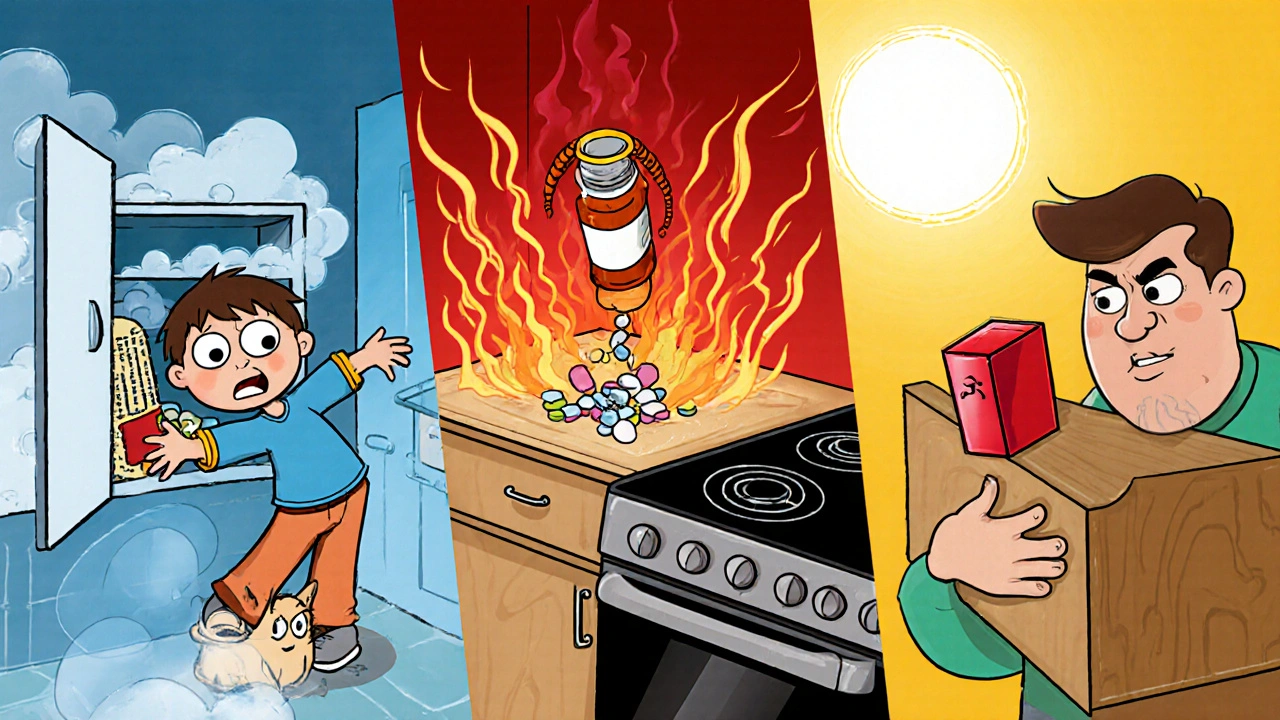
Safe disposal methods
Throwing acetaminophen in the regular trash or flushing it down the toilet can contaminate water supplies and harm wildlife. Australia’s Therapeutic Goods Administration (Therapeutic Goods Administration, TGA) recommends several environmentally friendly options.
1. Pharmacy take‑back programs
Most community pharmacies partner with the Pharmacy Take‑Back Program - a free service that collects unwanted medicines for safe destruction. Just bring the unopened or opened bottles to the counter; the pharmacist will handle the rest.
2. Household hazardous waste (HHW) collection
Many local councils run quarterly HHW days where you can drop off expired drugs. Melbourne’s city council, for example, accepts solid oral medications at its waste centre.
3. Incineration at approved facilities
If a take‑back option isn’t nearby, the next best route is high‑temperature incineration. This method destroys the active ingredient completely, preventing any leaching into the environment.
4. Trash disposal (last resort)
When none of the above are feasible, you can place the pills in a sealed, waterproof bag, then mix them with an unpalatable substance like coffee grounds before tossing them in the regular trash. This reduces the chance of accidental ingestion by animals or humans.
Step‑by‑step disposal checklist
- Gather all acetaminophen products, including bottles, blister packs, and leftover liquid.
- Check each label for the expiration date; set aside any that are still valid for proper use.
- If a take‑back location is within 10 km, drop the expired items at the pharmacy. Record the date for your records.
- If not, place the pills in a sealable bag, add a cup of coffee grounds or cat litter, and seal the bag.
- Label the bag “Expired Medication - Do Not Consume.”
- Discard the bag in your household waste or bring it to the next HHW collection day.
Following this list takes less than ten minutes and makes sure the drug won’t end up in a river or a backyard.
Special cases: liquid acetaminophen and crushed tablets
Liquid formulations (often used for children) pose a different challenge because they can’t be mixed with dry fillers. The safest route is to pour the liquid into a sealable container, add a scent‑free absorbent material (like sawdust), and seal it before disposal. For crushed tablets - maybe you split them for a dose - treat them like regular pills: mix with cat litter or coffee grounds to make them unappealing.
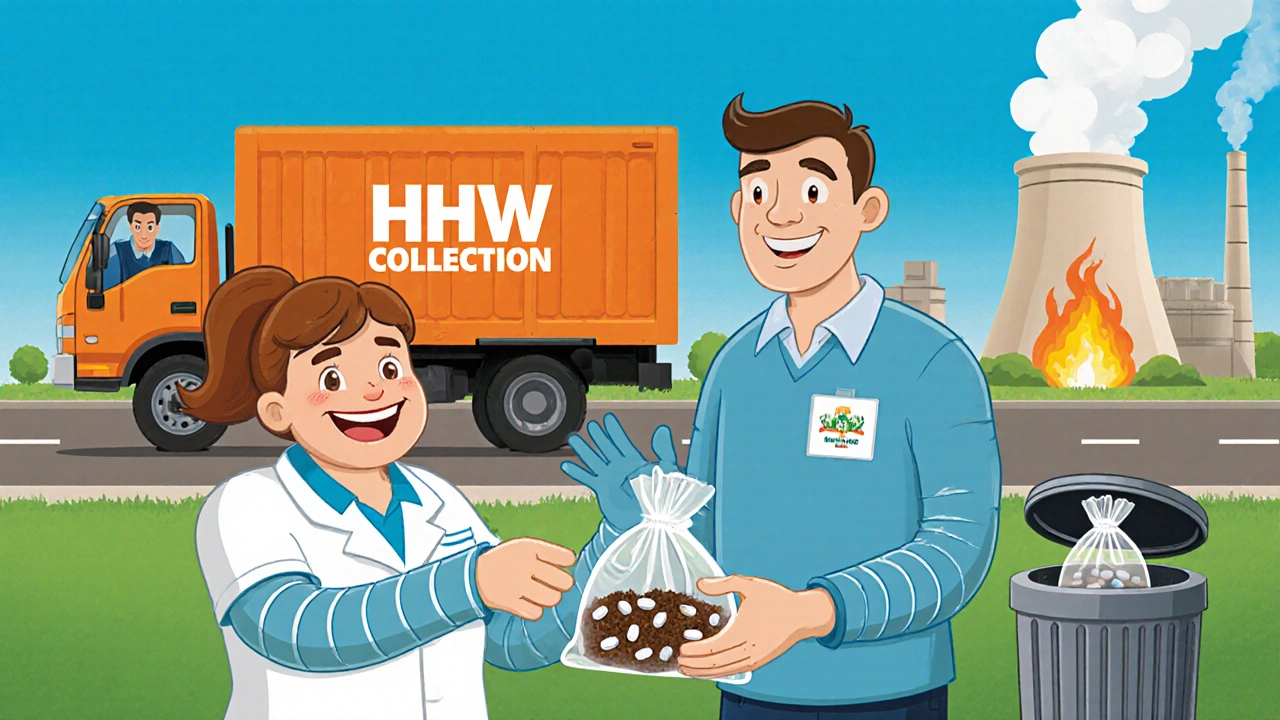
Comparison of disposal options
| Method | Environmental impact | Convenience | Cost |
|---|---|---|---|
| Pharmacy take‑back | Low - drugs are destroyed safely | High - many pharmacies accept drops daily | Free |
| HHW collection | Low - incinerated at certified plants | Medium - only on scheduled days | Free |
| Incineration (private) | Low - complete destruction | Low - requires transport to facility | Variable (often fee) |
| Trash (sealed bag + filler) | Medium - risk of leaching if bag fails | High - can do anytime | Free |
Quick tips you can start using today
- Store acetaminophen in a cool, dry cabinet, not the bathroom.
- Keep the child‑resistant cap tight after each use.
- Check the expiration date every six months.
- Use a pharmacy take‑back program whenever possible.
- If you must trash it, seal the pills in a waterproof bag with coffee grounds.
Frequently Asked Questions
Can I flush acetaminophen down the toilet?
No. Flushing can introduce the drug into waterways, affecting fish and other wildlife. Use a take‑back program or the sealed‑bag method instead.
Is it safe to keep acetaminophen in my bathroom cabinet?
Generally not. Bathrooms are humid, which can cause tablets to clump and degrade faster. Choose a dry pantry or bedroom drawer instead.
What should I do with opened liquid acetaminophen?
Pour it into a sealable container, add an absorbent like sawdust, seal tightly, and dispose of it with your household waste or bring it to a HHW collection point.
Are there penalties for throwing medication in regular trash?
Not usually, but improper disposal can lead to environmental fines for businesses. For households, the bigger risk is accidental poisoning, so follow safe practices.
How often should I replace my acetaminophen supply?
Check the expiration date every six months and replace any bottle that’s close to or past that date. Keeping a fresh supply also ensures proper dosing.
By storing acetaminophen correctly and disposing of leftovers responsibly, you protect your family, your pets, and the environment. A few minutes of effort now saves headaches later - literally.

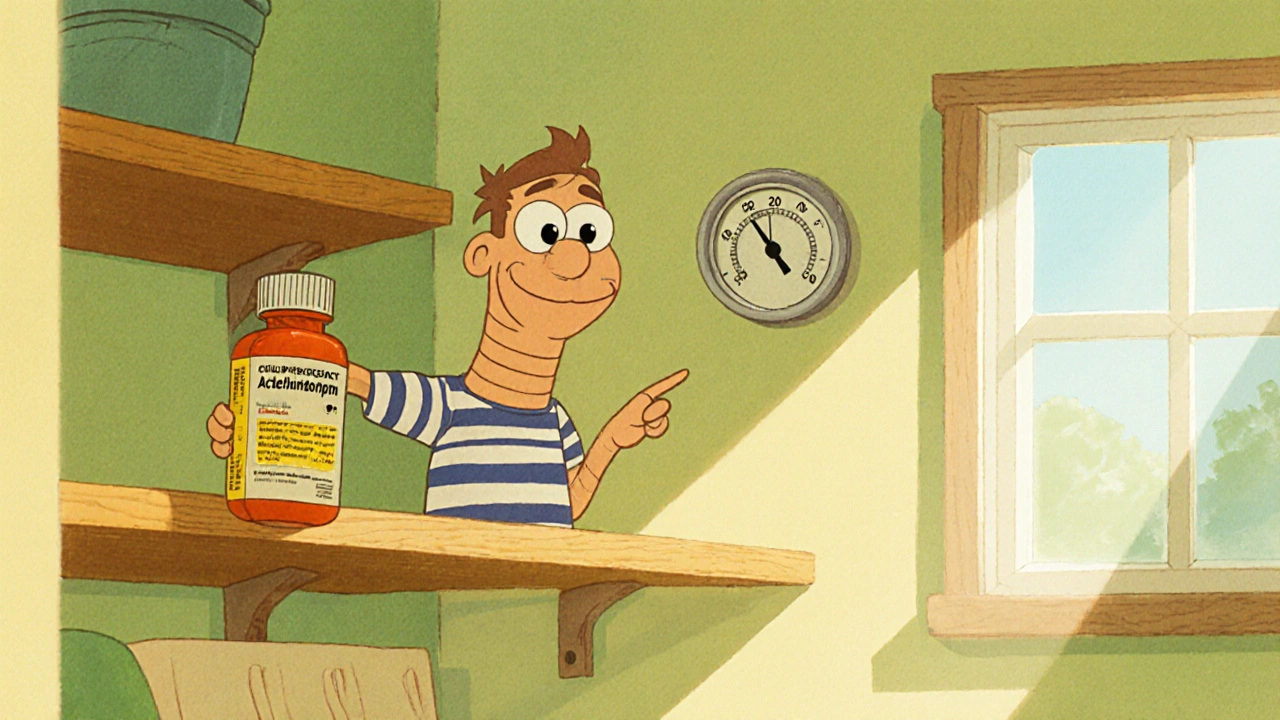

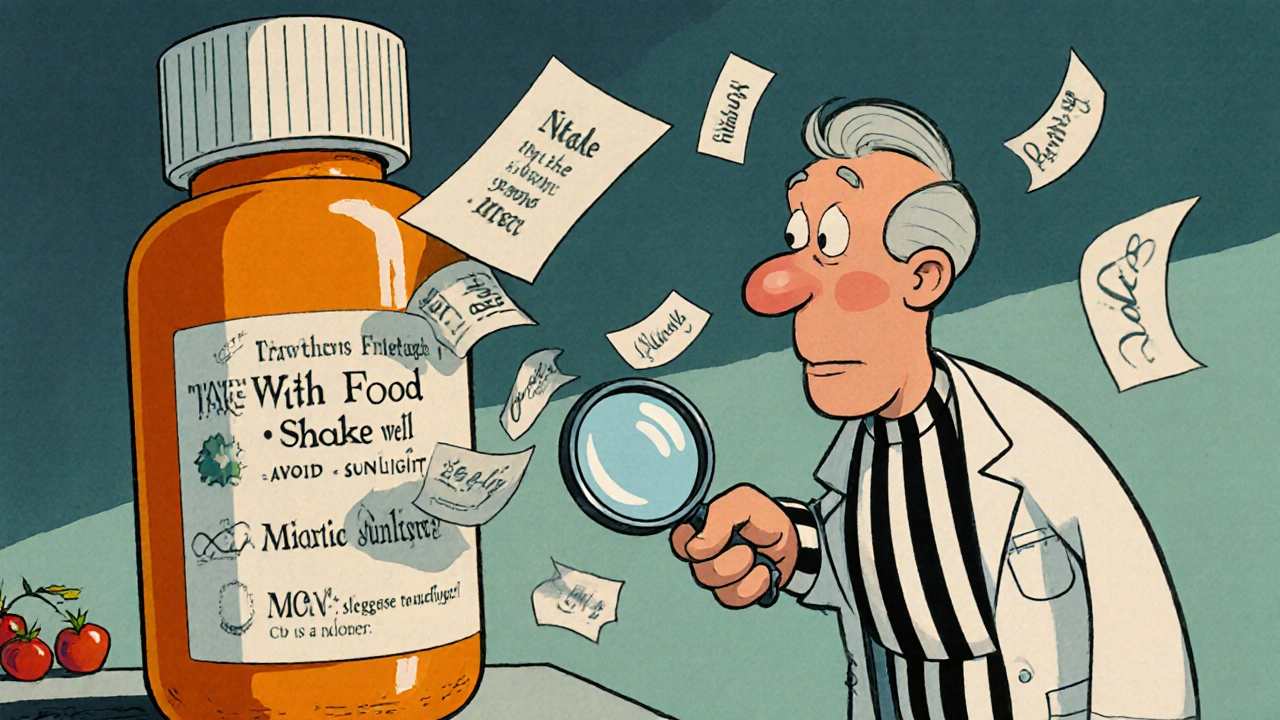
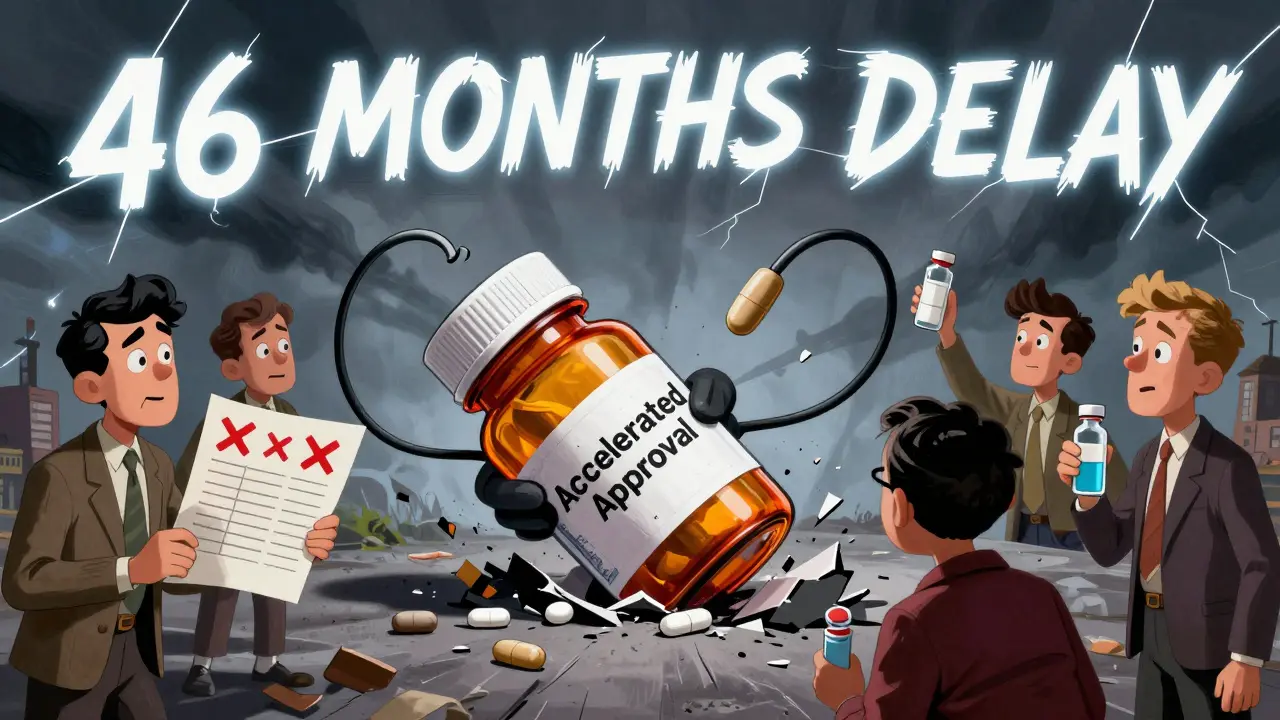
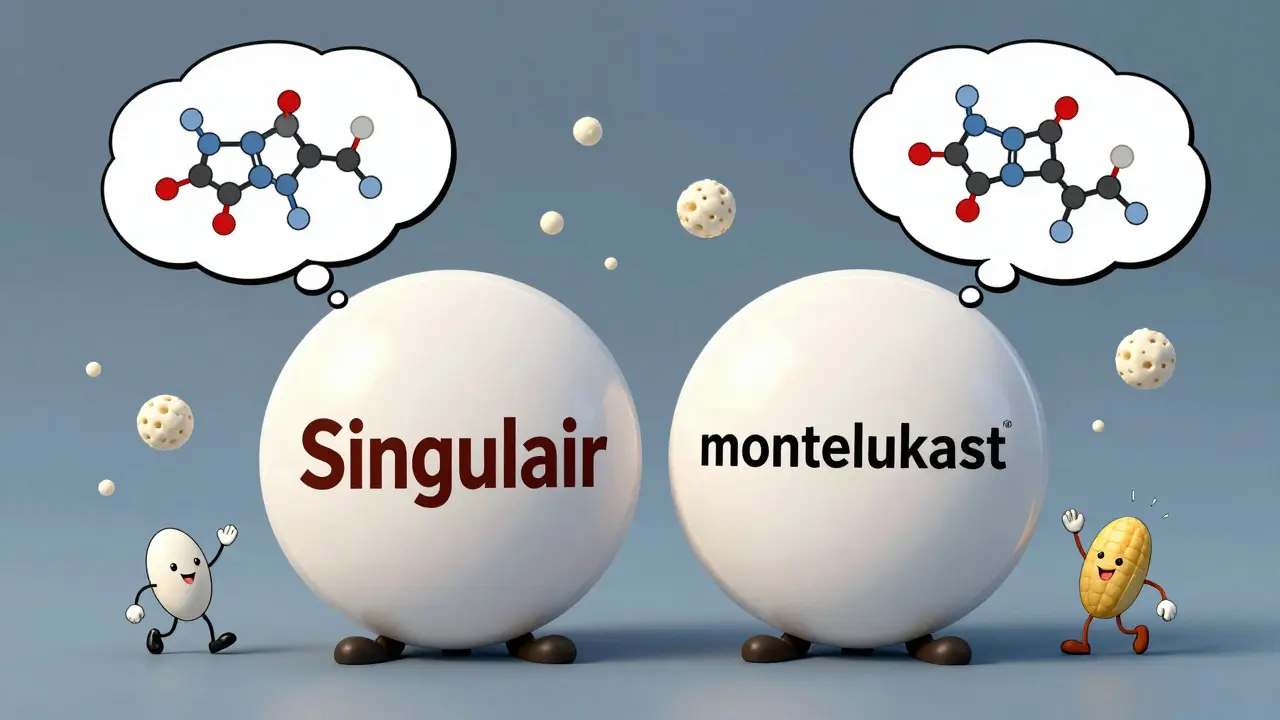
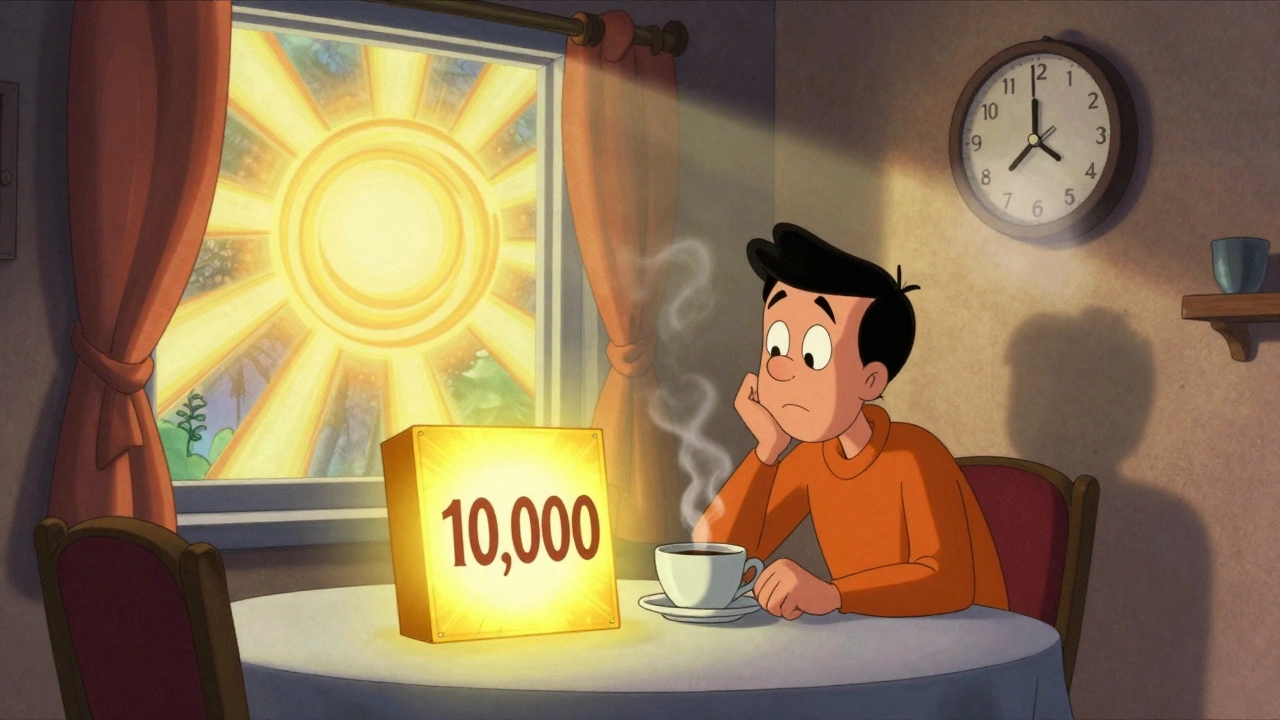
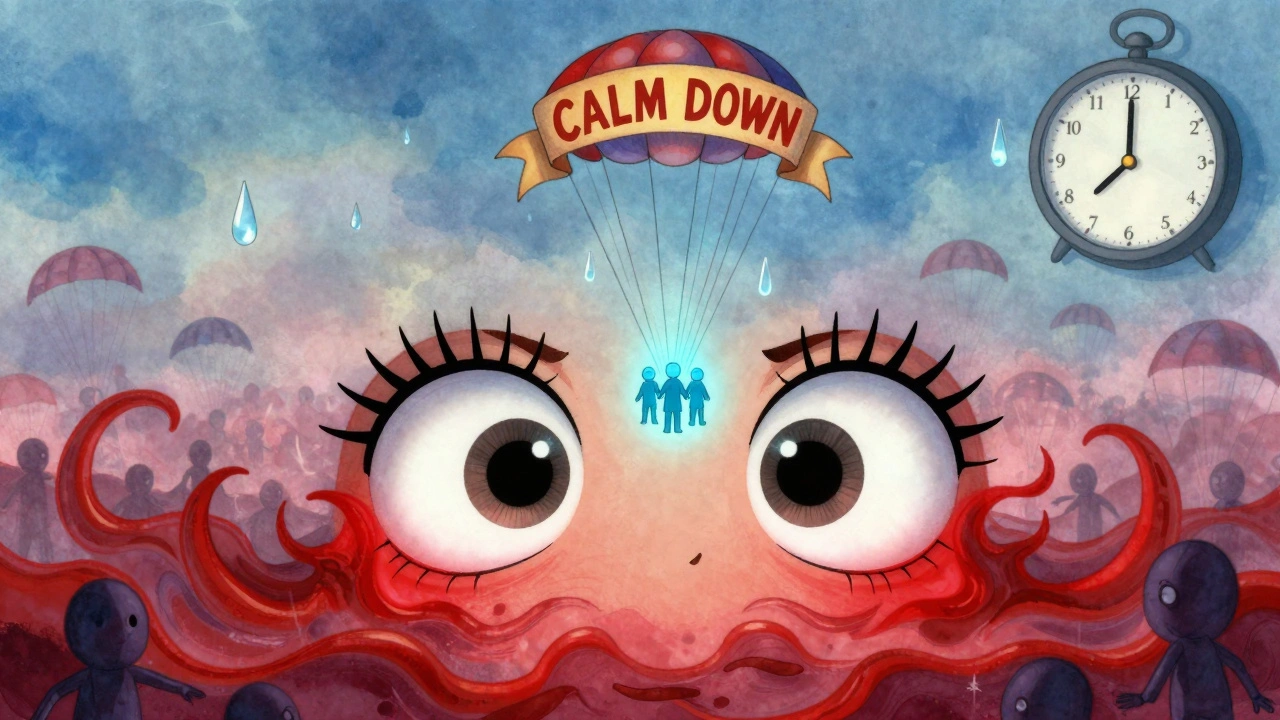
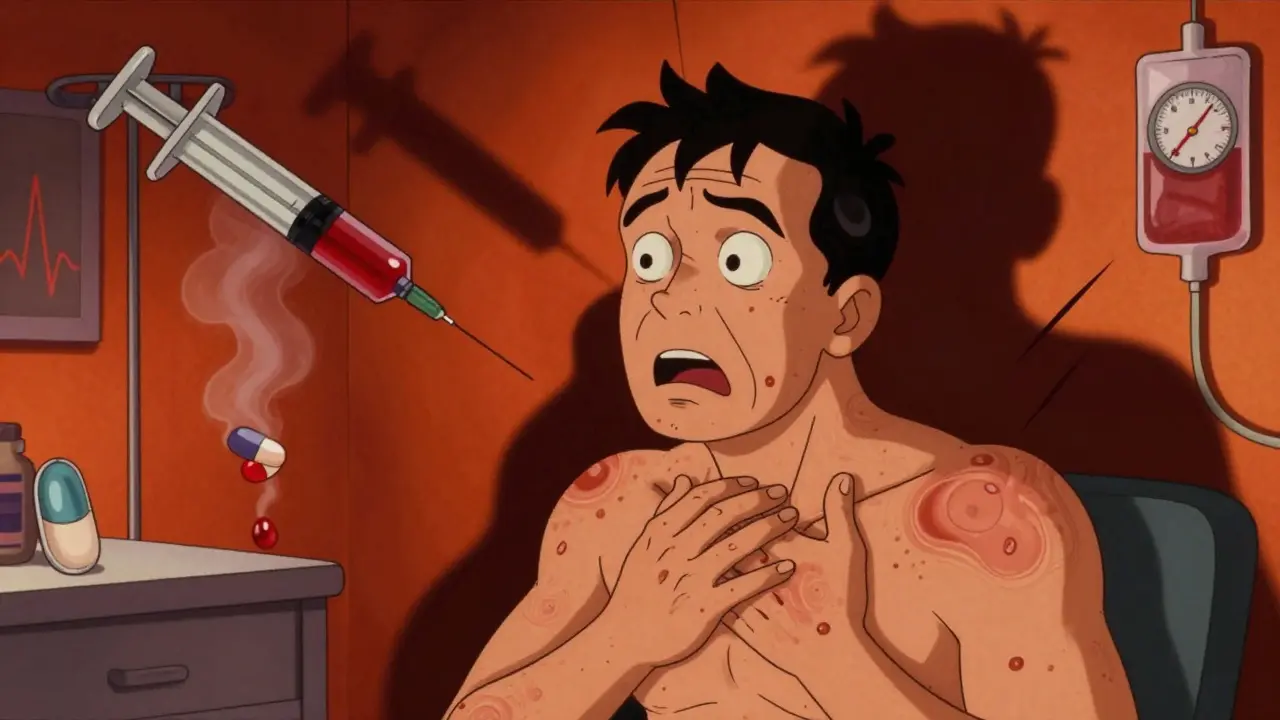
Abby W
I keep my acetaminophen in the freezer because I think the cold makes it last forever 🥶💊. Turns out the extreme temps actually break the tablets down faster, but hey, it’s a good excuse to raid the freezer for extra snacks 😅. Just a heads‑up to anyone who’s tempted to treat medicine like ice‑cream. Store it in a dry pantry, not the fridge, and keep the cap tight. 🙌
Lisa Woodcock
Totally get where you’re coming from, it’s easy to over‑think storage spots. The key is keeping it cool *and* dry-like a kitchen cabinet away from the stove. A quick habit of checking the cap after each dose saves a lot of hassle later. Also, sharing these little tricks helps everyone stay safe. Thanks for sparking the convo! 😊
Sarah Keller
When we think about storing a simple painkiller, we are really confronting the larger question of how we treat the tools that sustain our bodies. The pills are not just chemicals; they are a promise of relief, a trade‑off against suffering. If we neglect their proper custodial care, we betray that promise and invite unnecessary pain. A cabinet that leaks moisture is a silent accomplice to degradation, turning relief into irritation. Likewise, exposing tablets to sunlight is an act of careless disrespect toward the chemistry that humanity has refined over centuries. We must recognize that each bottle carries an implicit contract: we protect it, and it protects us. Ignoring that contract is a form of negligence that echoes broader societal apathy. The environment suffers when we dump meds carelessly, seeping into waterways and harming ecosystems. This is not an abstract concern; it is a concrete danger to fish, amphibians, and eventually our own food chain. Moreover, children and pets become unintended victims when medicines sit in the wrong place. The moral imperative is clear: store the drug in a cool, dry, locked space and dispose of it responsibly. Take‑back programs exist precisely because the market cannot solve the waste problem alone, and we must participate. If those programs are out of reach, the sealed‑bag method offers a viable, low‑risk alternative. Treat the disposal process with the same seriousness as prescription adherence; it’s part of the therapeutic cycle. Finally, make a habit of checking expiration dates every six months-it is a tiny act that safeguards efficacy and safety for you and your community.